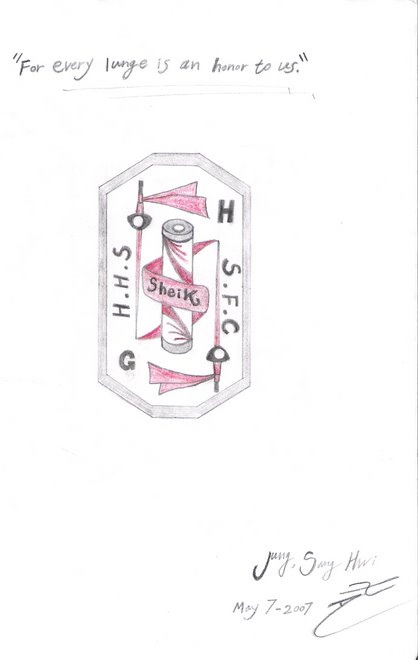Advance
Taking a step towards one's opponent.
Attack
Movement or series of movements by which a fencer tries to score a point. In foil and saber, the fencer who attacks first acquires the "right-of-way." In order to execute a attack properly (i.e. one that the referee will acknowledge), the fencer's hand must be clearly extending towards their opponent's valid target in a threatening manner.
Beat
Sharp tap on the opponent's blade to initiate an attack or provoke a reaction.
Disengage
Evasive action in which the fencer avoids the opponent's attempt to take their blade.
Engagement
Contact between the fencers' blades - often as the prelude to an attack.
En Garde
Position taken before fencing commences.
Feint
A false attack intended to get a defensive reaction from the opposing fencer, thus creating the opportunity for a genuine attack ("feint-disengage attack")
Fleche
Explosive, running attack (Foil and Epee only)
Flunge
Action unique to saber - a combination of a lunge and a fleche. Evolved recently after the FIE modified saber rules in 1992 to prohibit running attacks.
Guard
Part of the weapon between the blade and handle; protects the hand (also: "bell-guard")
Parry, Counter-Parry
Defensive action in which a fencer blocks his opponent's blade.
Lunge
Most common attacking technique, in which the fencer launches themselves at their opponent by pushing off from their back leg (which generally remains stationary).
Opposition
"Thrust with Opposition" - To simultaneously deflect the opponent's point with one's guard while making an attack of one's own. Commonly used in epee to avoid a double touch.
Piste
French term for the fencing strip.
Point-in-Line
Action in which the fencer, who is generally out of attacking range, points their weapon at their opponent with their arm fully extended. A fencer who establishes a point in line has right of way, and their opponent cannot attack until they remove the blade from line by executing a beat.
Recover
The return to the en guarde position after lunging.
Remise
Attacking again immediately after the opponent's parry of an initial attack.
Riposte
Defender's offensive action immediately after parrying their opponent's attack.
Second Intention
A tactic in which a fencer executes a convincing, yet false, action in hopes of drawing a true, committed reaction from their opponent.
Stop Hit, Stop Cut(saber)
A counter-action made at the moment of an opponent's hesitation, feint, or poorly executed attack. To be awarded the point, the fencer attempting a stop hit must clearly catch their opponent's tempo. Hence, if their Stop Hit is not "in time," the referee may award the touch to their attacker.
Strip
Fencing area, 14 meters long by 2 meters wide.
This information was provided by the United States Fencing Association
http://www.usfencing.org/usfa/content/view/1272/110/
~Jonathan Kim posting.
Friday, December 29, 2006
Subscribe to:
Post Comments (Atom)


No comments:
Post a Comment